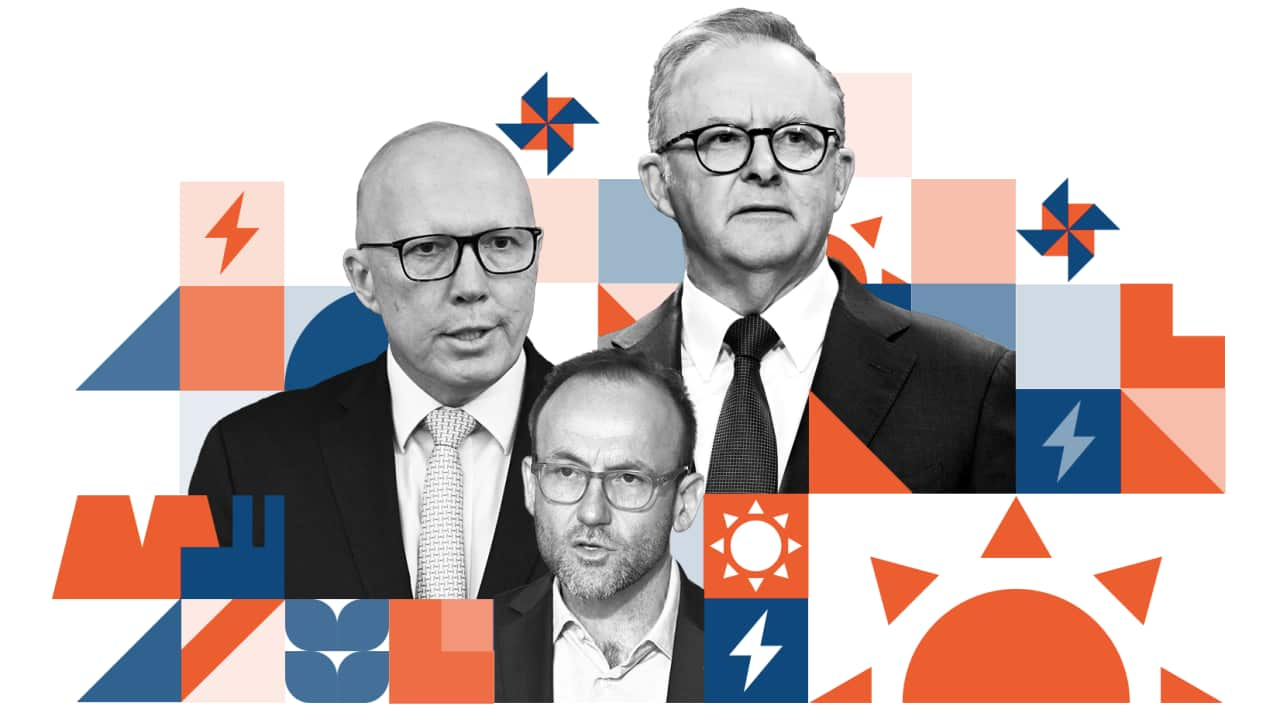Power bill relief is topping the election agenda, with both major parties claiming they will lower prices as they sell their vision for Australia’s energy transition to voters.
However, neither leader appears willing to put a figure on how much power bills will drop — nor how long it will take for their policies to achieve this effect.
The Coalition has repeatedly labelled Labor’s 2022 commitment to bring down power bills by $275 as a broken promise, given
Finance Minister Katy Gallagher defended Labor’s performance on Monday, telling ABC’s RN Breakfast that the policy announcement came before , which “has impacted energy prices right around the world”.
Hover over the image to see what various politicians have said about Australia’s energy transition. Source: SBS News
This election, Labor is offering to continue rebates aimed at lowering power bills, while the Coalition claims nuclear and more gas is the pathway forward.
What is the Coalition promising on power bills?
Opposition leader Peter Dutton has promised to which would force exporters to set gas aside for use in Australia.
He said the plan would “drive down” wholesale domestic gas prices by decoupling them from the higher international prices that exported gas attracts.
The Coalition’s plan also includes fast-tracking new gas projects and halving approval times, including a pledge to approve the North West Shelf gas expansion in Western Australia within 30 days of being elected.
“There’s no disputing the fact that if you put more supply into the market, that prices will come down,” Dutton told reporters on Sunday.
However, the Coalition has declined to provide an estimate for how much these policies would lower people’s power bills.
The Coalition has also pledged to build nuclear power plants at an estimated cost of $331 billion — .
It says the first reactor would be ready by 2035, five years sooner than the Commonwealth’s science agency, CSIRO, says a plant could be built.
Like Labor, the Coalition has pledged to achieve net-zero by 2050 but is yet to provide interim targets.
What is Labor pledging on energy bills?
Core to Labor’s strategy is an 82 per cent renewable electricity target by 2030, achieving net zero by 2050.
The government has committed to building more than 4,000km of high-voltage transmission lines to carry renewable energy and connect the country’s grid.
“We have a 2030 target, we’re confident we’ll meet it, and our policy is very clear … our policy is for renewables, backed with firming capacity of gas, batteries and hydro,” Albanese said on Monday.
The prime minister is also expected to announce subsidies for buying home batteries in the coming days, as reported by Nine newspapers.
The policy will help households store surplus solar power generated during the day and combat the cost of peak-hour energy costs in the evening.
The grant amount remains unclear but home batteries are expected to save households roughly $1,000 on their annual power bill.
In the short term, in energy bill relief if the government is re-elected.
The plan will see the rebates, paid in two $75 instalments over six months, extended until the end of 2025. It follows last year’s $3.5 billion power bill sweetener, which offered $300 per household.
What are the Greens proposing to combat energy prices?
The Greens oppose the expansion of gas projects and a nuclear industry in Australia.
The minor party supports the electrification of households and businesses, arguing it’s the best way to reduce emissions and power bills.
In March, they proposed grants of up to $10,000 and low-interest loans of up to $20,000 to install technologies such as induction cooktops.
The pitch included similar grants for installing solar batteries in households, which cost between $7,000 to $18,000, according to comparison site Solar Market.
“Getting homes off gas reduces pollution and helps bring down energy bills. It’s good for your health and it’s good for the environment,” Greens leader Adam Bandt said.
For the latest from SBS News, and .



